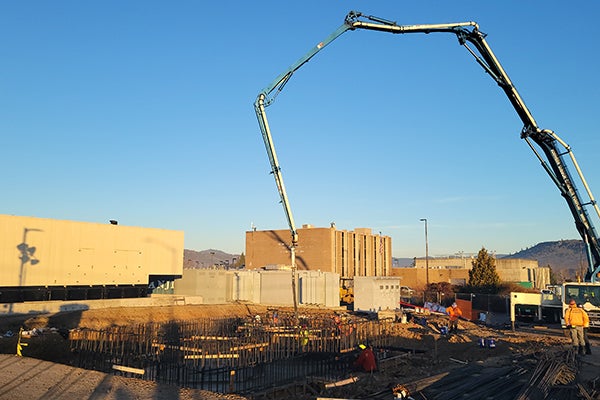The drinking water we now enjoy and often take for granted is a tribute to those former Medford residents who faced huge challenges to ensure that this community’s citizens would continue to have a reliable and high-quality water supply.
The history of Medford’s water began around 1888, with water from Bear Creek being diverted into an open ditch, and leading to the universal demand for better water service and an amendment to the city charter, creating the Medford Water Commission to manage the water system. Today, we continue the forward planning of our predecessors by undertaking projects, backed by our strong fiscal practices and commitment to water quality, that will help us serve our growing community for our second hundred years.
Medford Charter
The functions of Medford Water Commission are defined in Section 19 of the Medford Charter.
Timeline
Medford’s first ditch and piped water system from Bear Creek. Water levels were low and unclean.
Two redwood tanks (32,000 gallons each) are built next to Alba Park, fed by water from the ditch.
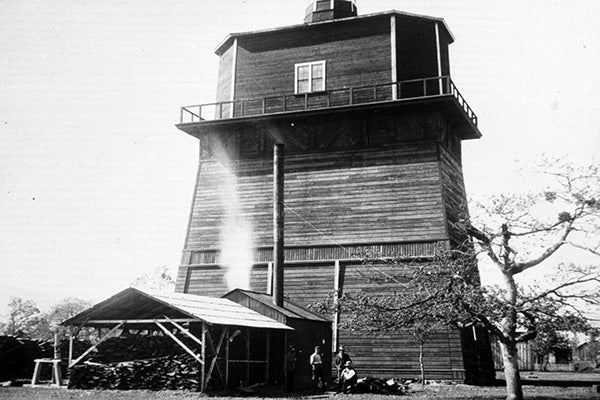
With tanks nearly emptied at times and Medford in debt; activities begin to make water and power self-supporting. Meters to be installed on residences, charged at $0.08 per 1000 gallons.
The ditch is abandoned; a pumping station (steam-powered, and later replaced with electric powered pump) is built on Bear Creek and pipelines are installed to the redwood tanks.
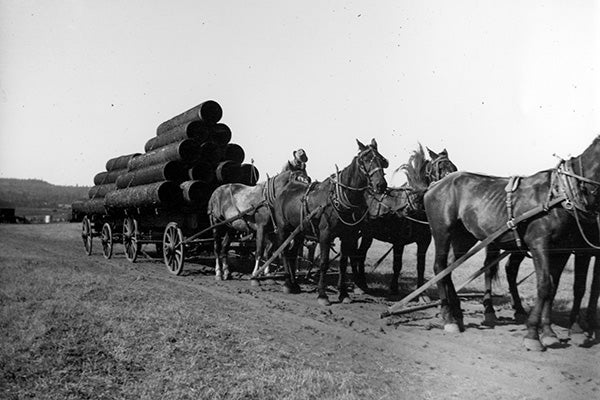
City enters into agreement with Fish Lake Water Co. to transport water to town from Little Butte Creek using wooden pipes (the pipeline from Bradshaw Drop to Medford was completed July 1909).
Construction is completed on the first reservoir at Capital Hill to store Fish Lake water (2MG; concrete lining was added in 1923, and it was extensively reconstructed in 1958). This facility would eventually become the hub of our distribution system.
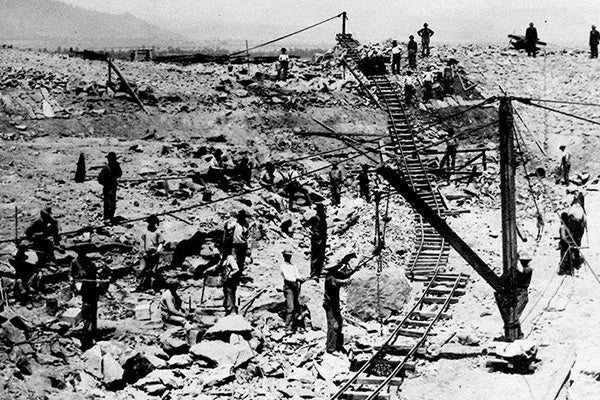
Both the quantity and quality of were proving inadequate within five years of completion of the Fish Lake project, discouraging residents (the building of the dam created muddy, taste, and odor issues), and a previous break in a supply line showed the impact of reliance on a single distant source.
Universal demand for better water service —and removing operations from direct city control—leads to an election amending the city charter and creating Medford Water Commission manage the municipal water system.
Construction begins on the second Capital Hill Reservoir (2MG).
Medford Water Commission obtains Big Butte Creek Water Rights.
“Medford’s Million Dollar Water System” Citizens vote to construct steel pipelines underground 30.5 miles from Big Butte Springs using $975,000 in bonds to fund the project. Robert Duff is hired to design and oversee the project.
The Big Butte Springs pipeline is completed, and Medford residents finally have a high-quality water supply in a quantity, achieving their dream of “A mountain spring in every home.”
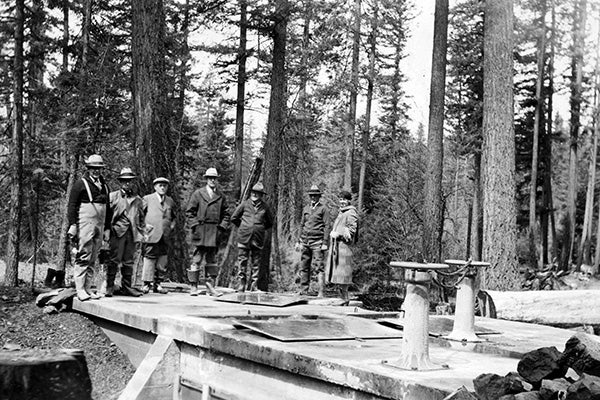
Debt from prior systems and high water rates raise ire, leading to two ballot measures. The first ended in a vote to retain the Water Commission, and the other authorized sale of “surplus water to organized water districts outside of and adjacent to the City of Medford, subject, however to the prior right of the City of Medford to use the same.”
1945
Construction begins on the third Capital Hill Reservoir (8.2MG).
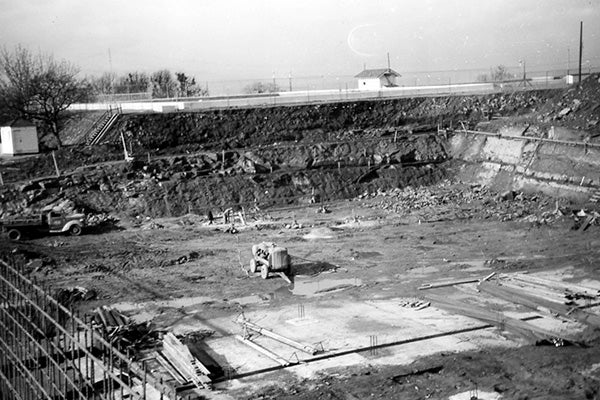
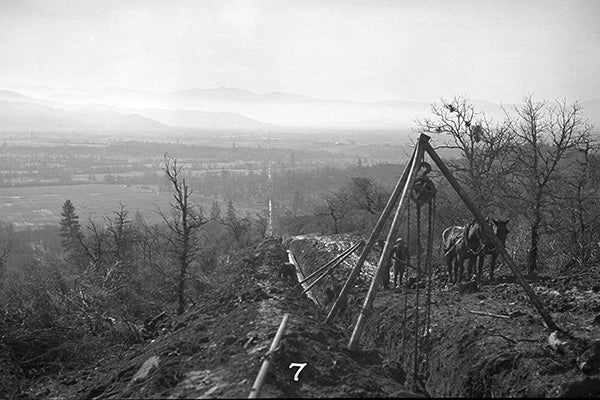
Following years of water shortages and resulting watering restrictions, a second Big Butte Springs pipeline is constructed, doubling the capacity of the water supply system. Willow Creek Dam is also constructed, forming Willow Lake.
Medford Water Commission obtains Rogue River water rights to prepare for future water needs.
Ongoing projects take place over several decades to enhance the water system and keep pace with growth, such as transmission mains (1958-1981), construction of a 10-million-gallon Bullis Reservoir (1965), Conrad Pressure Station (1967), and Martin Pressure Station (1969).
Following the addition of part-time chlorination sometime in the 1940s, full time chlorination is added due to increasing water quality standards.
Rancheria Springs, a small spring near Big Butte Springs, is developed so it can be pumped into the pipelines to help keep them full.
The Robert A. Duff Water Treatment Plant is constructed on the Rogue River and is used today to supplement the Big Butte Springs water supply. Phase 1 of the plant has a 15 mgd capacity.
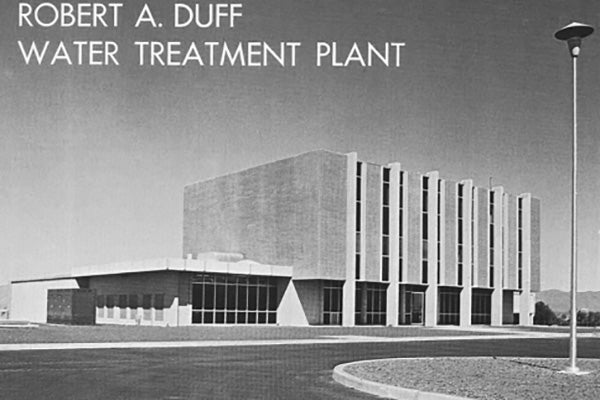
East Medford annexations require additional system development, such as the Stanford Reservoir (1.5MG, 1971), Hillcrest Reservoir #1 and Hillcrest Reservoir #2 (140k and 40k gallons, respectively, completed around 1972), and related pump stations.
The Duff Water Treatment Plant and Rogue River intake are expanded to 30mgd; 3-million-gallon addition to Duff Plant reservoir.
Continued projects to meet growth and changing water quality rules are undertaken over time, such as the installation of telemetry control (1990), construction of a disinfection facility at Big Butte Springs (1993) and Rossanley Pressure Control Station (1994).
The Duff Water Treatment Plant is upgraded and expanded again, to 45 mgd capacity, accomplished through a series of multi-year projects (1997-2000) entirely without debt financing.
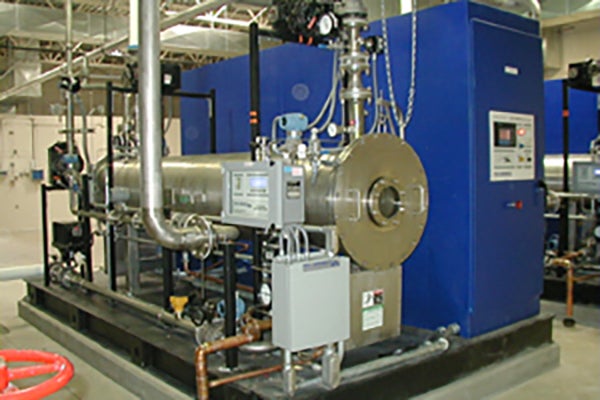
Ozonation is added to water treatment at the Duff Water Treatment Plant for low- level taste and odor issues in the Rogue River source.
Projects to keep pace with growth, changing rules, technology, and maintenance needs continue, such as the installation of T-Screens in the intake at the Duff Water Treatment Plant to meet updated fish screening requirements and prevent to prevent fish from swimming or being drawn into the facility.
Wetland mitigation begins for future Duff Water Treatment Plant expansion.
Our Rogue Valley Water Supply Resiliency Program is underway, and includes an expanded 65 mgd water treatment plant, water quality enhancements, a new River Zone Reservoir and Operations Center, and the rebuilding of the Capital Hill Reservoirs. This forward planning will help us serve our growing community for the next hundred years.
